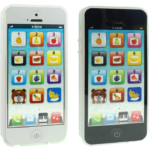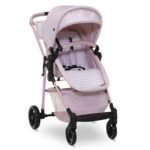"Cherishing Little Steps - A Haven for Baby and Family Journeys"
6 Week Old – What to Expect
6 Week Old – What to Expect
What’s It Like To Be Six Months Old?
I turn toward voices.
I reach for toys and pick them up.
I can hold an object in one hand and put it into the other hand.
I briefly look for a dropped toy.
I pick things up and I shake them.
I turn objects upside down to get another view of them.
I may roll over from my stomach to my back and from my back to
my stomach.
I play with my toes.
I may help hold my bottle.
I know my name.
I may play games with people I know.
I babble, squeal and repeat sounds.
I sit by leaning forward on my hands. I can sit with support.
I may be afraid of adults I don’t know.
I know the faces of the people who are around me a lot.
I may know what the tone of your voice means.
Each month, Healthy Start, Grow Smart will provide information about
how babies grow and develop. If you have immediate questions or
concerns about how your child is developing, call your baby’s doctor.
Guiding Your Active Baby
At the age of six months, your baby is more active than in past months. Because she gets around more, it’s a good idea to make your home safe for your baby. Put all cleaning supplies, medicines, poisons and sharp objects where your baby can’t get to them. Be sure that everyone who cares for your baby knows how to keep her safe.
Sometimes she will reach for things she shouldn’t. She may pull at your jewelry. She may try to eat a piece of paper. A baby this young does not need to be punished. She is exploring her world. You need to gently control what she does so she will be safe. She will also know that you are in charge. Be with your baby as she explores her world.
At this age, your baby is not doing things to upset you on purpose. She learns by trying new things. She doesn’t know the limits. She needs you to show her what is okay and what is not okay for her to She needs you to show her in a loving way.
Always check on your baby when she cries to be sure that she is okay. Never leave her alone. Always watch your baby’s activities. Praise her and hug her when she is doing things you like.
Let her know when she is doing something you don’t want her to do. If she starts to yank out an electrical cord, or if she spills out the contents of a purse, speak to her in a warm but firm voice. You don’t need to raise your voice. Gently take her hand away and give her a toy. Maybe she’ll be too close to the hot stove. Maybe she’ll try to grab something that could break. Gently pick her up and move her away from the thing she shouldn’t touch.
Your Baby’s Developing Brain
Each brain, like each child, is unique. Here are some findings by researchers that may help you with developing your baby’s brain:
Your baby may make sounds such as “ba,” “ma” and “ga.”
Sometimes parents think these sounds mean more than they do.
Wait. Soon your baby will attach a meaning to the sounds she
makes.
Talk to your baby often. This will help her learn to use sounds.
Being in a safe and loving place helps your baby to learn. Toys
bought in stores are not needed. Playing with pots and pans can be
just as much fun. Playing with simple things is just as good for your
baby’s development.
Praising your baby’s good behavior is good for both of you. Show
her that you like the way she is acting. This will help her do more
things you like.
When you take her to new places, your baby will want to reach for
new objects that she sees. She is not trying to misbehave. Plan
ahead and bring a favorite toy when you go out with her.
Games To Play with Your Six-Month-Old
A six-month-old is awake for much of the day, and she wants to play.
Here are some tips for having fun with your baby:
Play naming games with your baby. Point to her nose and say, “nose.”
Do the same with her eyes, hands and toys.
Play pat-a-cake with your baby.
Play pop-goes-the-weasel. When you reach the “pop,” raise your
baby’s arms in the air. Don’t jerk her arms or swing her by the arms.
Partly hide a toy under a blanket or piece of cloth. Let your baby grab
the toy and learn to pull the blanket off.
Put several empty plastic cups into a shoebox. The cups can be
different sizes. Reach into the box and take one cup out at a time. Pick
out another cup and do it again. After you do this a few times, your
baby will imitate you.
Put a large picture of yourself and dad near her crib or high chair.
When she says “mama” or “da-da,” point to the pictures. Say, “There’s
mommy” (or, “There’s daddy”).
Floor Time Is Playtime
Babies who are six months old need lots of floor time so they can learn to crawl and creep. If your baby doesn’t like being on the floor by herself, join her. Play on the floor with her. Here are two activities that you can do during floor time:
Put your baby in a sitting position. Support her with pillows. Roll a soft
ball to her and clap when she tries to roll it back.
Give your baby two plastic cups. Show her how to bang them together
or to bang them on the floor.
Safety Corner
Here are some tips to make sure your baby is safe from harm or
injury:
Never leave your baby alone in a high place, such as a tabletop, a
couch or a bed.
Don’t leave her in a crib with the sides down. She can hurt herself if
she falls.
Never drink, eat, prepare or carry hot things while holding your
baby.
Don’t smoke around your baby. Don’t allow others to do so.
Never give your baby any food or anything that could make her
choke. Only give her foods that have been mashed.
If you can, set the temperature of your hot water heater to 120
degrees or less. This will protect your baby from burns.
Never shake or hit your baby.
Never leave your baby alone with any pet. Even friendly pets can
harm a baby.
In the car…
Buckle your baby in a child seat in the back seat of your vehicle.
The child seat should face the back of your car, not the front.
Babies should never ride in the front seat of a car.
Never hold your baby in your lap while you are driving.
Never leave your baby alone in a car. Don’t do it even if the
windows are partly open.
In the crib…
Crib mattresses should fit the crib snugly. There should be no gaps between the mattress and the sides of the crib. Do not cover the mattress with plastic bags of any kind. The slats on the side of the crib should be 2 3/8 inches apart, or even closer. Keeping Your Home Safe
Here are things you can do to make your home safe for your baby:
Close the bathroom door.
Put gates across steps and stairs.
Cover unused electrical outlets. Use products that cover outlet
holes.
Keep cords from drapes and blinds and electrical cords out of your
baby’s reach.
Put baby locks on cabinets.
Protect your baby from furniture with sharp edges. You may be able
to move the furniture to another room. Or let her play in another
room.
Keep medicines where your baby can’t reach them.
Move cleaning products from under the sink. Put them where your
baby can’t reach them.
Keep small objects and balloons away from your baby.
You can learn more about how to make your home safe for your baby.
Call the U.S. Consumer Product Safety Commission at 1-800-638-
- The call is free.



Top site ,.. amazaing post ! Just keep the work on !
antihistamine generic names best allergy medications over the counter allergy pills for rash
where to buy zopiclone pills modafinil 200mg price
prednisone pills deltasone 10mg generic
Wonderful post! We will be linking to this great article on our site. live streaming dubai
my medicines make me puke order avapro 300mg sale
why does adult acne happen avlosulfon over the counter acne ointment by prescription only
painkillers that don’t upset stomach buy epivir without prescription
isotretinoin 10mg cost order isotretinoin online generic accutane 20mg
virtual visit online physician insomnia order provigil 200mg without prescription
order amoxicillin 1000mg pills amoxil 250mg us purchase amoxicillin generic
azithromycin medication zithromax 500mg cost zithromax 500mg brand
azithromycin online buy buy azithromycin for sale buy cheap azithromycin
order generic furosemide 100mg buy furosemide 40mg pill
omnacortil 5mg cost omnacortil oral order omnacortil 10mg sale
buy prednisone 40mg prednisone for sale online
amoxicillin over the counter amoxicillin without prescription amoxicillin 250mg sale
doxycycline 100mg usa buy doxycycline 200mg online
albuterol buy online ventolin 2mg over the counter buy albuterol 2mg
clavulanate pill amoxiclav brand
buy levoxyl pill order synthroid 100mcg pill levoxyl uk
vardenafil canada order vardenafil 10mg online
buy clomiphene 50mg pill clomid 50mg over the counter clomid 50mg pills
buy tizanidine online cheap tizanidine sale buy zanaflex without prescription
semaglutide 14 mg pill buy rybelsus 14mg online cheap cost semaglutide 14mg
prednisone 10mg usa order prednisone 40mg online brand deltasone 5mg
buy generic rybelsus over the counter rybelsus 14mg price order rybelsus 14mg online cheap
cost accutane 40mg order generic accutane 40mg buy accutane paypal
Thank you for great information. look forward to the continuation.<a href="https://www.toolbarqueries.google.cz/url?sa=i
amoxil 250mg over the counter buy amoxicillin 1000mg generic cheap amoxicillin for sale
albuterol 2mg sale buy ventolin for sale strongest over the counter asthma
buy zithromax 250mg zithromax 500mg over the counter cost zithromax 250mg
buy augmentin 1000mg online cheap amoxiclav brand amoxiclav tablet
generic prednisolone 10mg prednisolone oral omnacortil 40mg without prescription
synthroid 75mcg canada synthroid medication buy synthroid 100mcg for sale
order neurontin pill buy neurontin online order neurontin 800mg generic
order clomid buy clomid generic buy clomiphene without prescription
Great post Thank you. look forward to the continuation.-das perfekte dinner facebook
lasix 40mg price buy furosemide medication furosemide buy online
sildenafil 100mg without prescription generic viagra 50mg viagra 50mg pill
order doxycycline 100mg pills doxycycline ca oral vibra-tabs
online casinos for usa players casino online gambling casino online usa
buy rybelsus 14 mg online cheap semaglutide brand semaglutide 14mg cost
order generic pregabalin 75mg pregabalin 150mg usa pregabalin online buy
buy generic vardenafil vardenafil 20mg for sale levitra 20mg pill
cheap triamcinolone 4mg cost triamcinolone purchase triamcinolone
buy plaquenil 200mg pill hydroxychloroquine without prescription hydroxychloroquine buy online
how to buy desloratadine desloratadine 5mg cost order desloratadine 5mg without prescription
cialis mail order us cost tadalafil purchase tadalafil pill
loratadine 10mg drug claritin generic order claritin without prescription
buy cenforce 50mg online cenforce pill cenforce tablet
dapoxetine us buy cytotec for sale purchase misoprostol online cheap
aralen 250mg pill chloroquine without prescription buy chloroquine pill
lso thank you for allowing me to comment!.[2024 Newest] Carpuride W903 Portable Wireless Apple Carplay
buy glucophage cheap glycomet cheap glucophage oral
acyclovir pills order zyloprim 300mg for sale order allopurinol 100mg
norvasc over the counter amlodipine cheap purchase norvasc online
order crestor 20mg generic buy rosuvastatin pills brand zetia
buy prinivil pill lisinopril 5mg generic order lisinopril 10mg for sale
order motilium generic buy generic sumycin 500mg tetracycline pills
order omeprazole 10mg generic order omeprazole 20mg online omeprazole drug
flexeril 15mg for sale buy flexeril generic brand baclofen 10mg
metoprolol uk metoprolol brand buy metoprolol 50mg sale
Very nice blog post. definitely love this site. – girls hey dudes
toradol where to buy buy toradol without prescription colchicine for sale online
purchase atenolol pills purchase tenormin buy generic atenolol 100mg
Very nice blog post. definitely love this site.tick with it!
Great post! Congratulations! visit